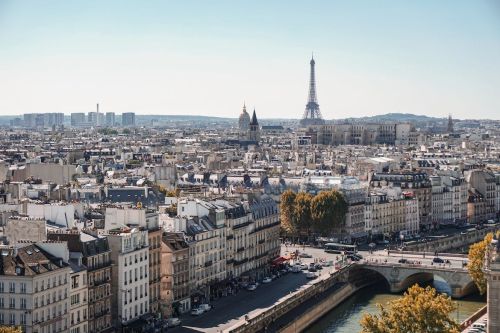Although humanity came to Europe from Asia Minor, Europe is referred to as the Old Continent. This term appeared in the 16th century, when European sailors began to discover other regions of our planet and it turned out that the world is much larger than it previously seemed.
Pangea broke into two parts and a new continent emerged from its northern part - Laurasia. The British Isles rose about 150 million years ago. Until about 85 million years ago, most of continental Europe consisted of islands. Just after the extinction of the dinosaurs about 65 million years ago, the western part of Laurasia began to form the shape of today's Europe.
It is also one of the youngest seas in the world - it was created about 14.000 years ago. Initially, the Baltic Sea was a fresh glacial lake, and only about 10.000 years ago salty water from the Atlantic Ocean began to flow into it.
These were representatives of Homo erectus who lived in the area of present-day Georgia. About a million years ago, our ancestors lived on the Iberian Peninsula and the area of today's France. During the glacial period, the glacier effectively stopped the colonization of the northern regions of Europe, and only about 12.000 years ago did Homo sapiens expand northwards. About 8000 years ago, they colonized the area of Central Europe, and a thousand years later - Scandinavia.
The first people settled in this place 8000 years ago and settlement continues here to this day. In the 5th century BC became part of the Odrysian kingdom. Philip II of Macedon named it Philippopolis after conquering Thrace. In 46, Philippopolis was incorporated into the Roman Empire.
The oldest country is San Marino, founded in 301, and the youngest is Kosovo, which gained independence on February 17, 2008. The Republic of Kosovo is not internationally recognized by all countries.
There are therefore more than twice as many Europeans as inhabitants of the USA, and almost half as many as inhabitants of Africa, India, or China.
If we also included Russia as a European country (it is located in both Europe and Asia), it would be the most populous country with 146 million inhabitants. France is in second place (over 65 million) and Great Britain is third (over 63 million).
The second least populous country is San Marino (about 33.000) and the third least populous is Monaco (37.000).
There are disputes as to who was the first king of Denmark. According to tradition and legends, it was Gorm the Old or his father Harthacnut (Canute I). Little is known about both of these rulers, as almost no written sources from the period of their lives have survived. If we were to count the history of the Danish monarchy from Canute, it would last from the second half of the 9th century. Gorm the Old ruled from the first half of the 10th century. A safe and certain date is the year 958, when Harald “Bluetooth” Gormsson, son of Gorm the Old, took the Danish throne.
These include Andorra, Belgium, Denmark, Spain, Liechtenstein, Luxembourg, Monaco, the Netherlands, Norway, Sweden, the Vatican and the United Kingdom.
Their number is impressive, as there are approximately 25.000 of them. For comparison, there are only 402 castles in Poland. The oldest German stronghold (Meersburg), according to legend, was built in 630. Unfortunately, few of the old walls have survived to this day, because a new castle was built on the structure of the old stronghold in 1710.
The leader is Lakhta Centr with a height of 462.5 meters - located in Saint Petersburg. The next four tallest skyscrapers are located in Moscow: Federation: East Tower, OKO: South Tower, Neva Tower 2, and Mercury City Tower. In 6th place is the Varso Tower in Warsaw, 310 meters high. Varso Tower is the tallest skyscraper in the European Union.
It is located in the Western Alps on the border between France and Italy. It has a height of 4.808,72 m above sea level.
There are 178.888 lakes in this country, which means that each of them has 26 fins. To counterbalance, the Vatican and Malta are countries where we will not find a single lake.
The construction of Ulmer Münster, which began in 1377, was completed only in 1890. The church tower is 161,53 meters high.
These are: Great Britain, Ireland, Malta, and Cyprus.
It is located in north-west Wales on the island of Anglesey. It was named so in the 19th century to become a tourist attraction.
There are over 130 volcanoes there and many areas show underground volcanic activity. The last lava flows were recorded in Iceland in the summer of 2021.
It is located 81 km south of Sicily, in the central Mediterranean Sea.
Almost 70 percent of the country's land area is covered by forests, most of which are managed and regulated by the state. Virgin forests occur only in the northernmost mountain regions.
It has nothing to do with any conspiracies or unexplained paranormal phenomena. The amount of exhibition space is simply limited enough to allow approximately 80.000 exhibits to be shown at the same time. Fortunately, in the age of digitization, more and more of the British Museum's treasures are being digitized. In 2020, 4.5 million of them were made available online.












